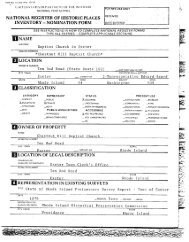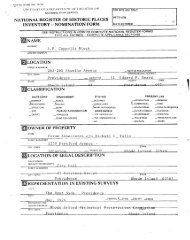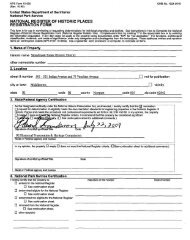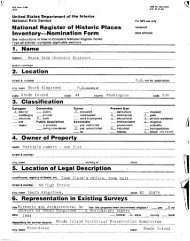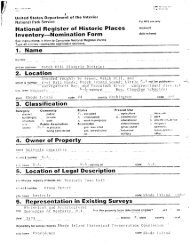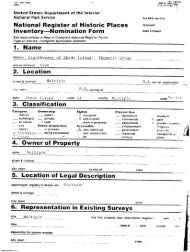1 Dr. Jonathan Prude, Emory University “The Great Transformation ...
1 Dr. Jonathan Prude, Emory University “The Great Transformation ...
1 Dr. Jonathan Prude, Emory University “The Great Transformation ...
Create successful ePaper yourself
Turn your PDF publications into a flip-book with our unique Google optimized e-Paper software.
5individuals were typically also farmers, for agriculture was the fundament. The nature of farmingvaried. But it was generally carried out by land-owning households cultivating fruits, grains, anddairy products meant for their own consumption but with small surpluses sold or traded for theservices noted above or for goods available at local stores. In sum, the farming-anchoredhouseholds of these communities mixed limited engagements in the market with readiness toprovide for themselves--so, for example, after acquiring (or perhaps producing) wool and flax)they not uncommonly spun their own yarn (Figure #1) and wove their own cloth.The people of these communities were principally native-born Protestant whites, alongwith perhaps a few slaves (until formal emancipation took effect) and free blacks. Taken as awhole, local populations were hardly egalitarian, for there were clear gradations of affluence andstatus extending from prominent individuals and families to those of lesser standing and down tothe outright needy. On the other hand, the townships were for the most part run by townmeetings in which enfranchised adult males selected their leaders and administered communityaffairs. Nor for that matter did local wealth necessarily signal economic power. Credit wasbroadly present but also broadly shared, so that debtors were also creditors. What’s more, it wasrare for large cohorts of individuals to toil for others as waged employees. The stores andhandicraft workshops may have had paid workers, but only a few. And while farming householdsmight take on extra hands during harvests or to aid in domestic chores, such assistance wereusually structured more as labor swaps or exchanges among relatives than as formal hirings.We should note, too, that the households themselves generally functioned as corporateunits operating under the authority of husbands and fathers. There were female tasks (likecooking, spinning, and weaving), and male work (like outdoor farming jobs). But farmingfamilies characteristically sought to bend their members’ energies toward patriarchally-definednotions of collective wellbeing. And the wellbeing attaching to these households wascharacteristically simply to remain farming households. Aligned with their semisubsistence/semi-commercialorientation, their priority was not to maximize gain so much as to







